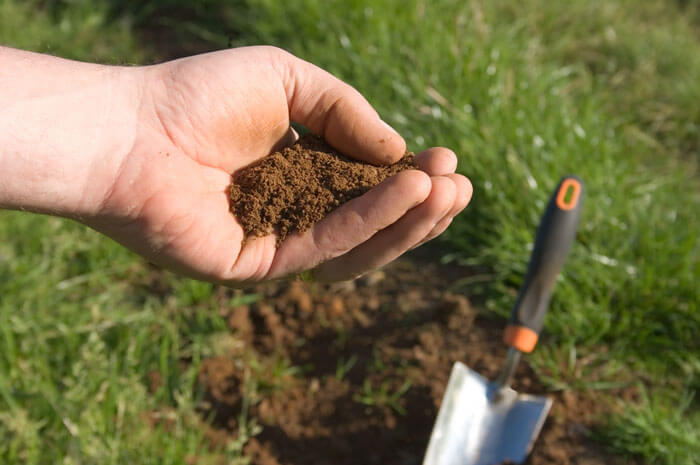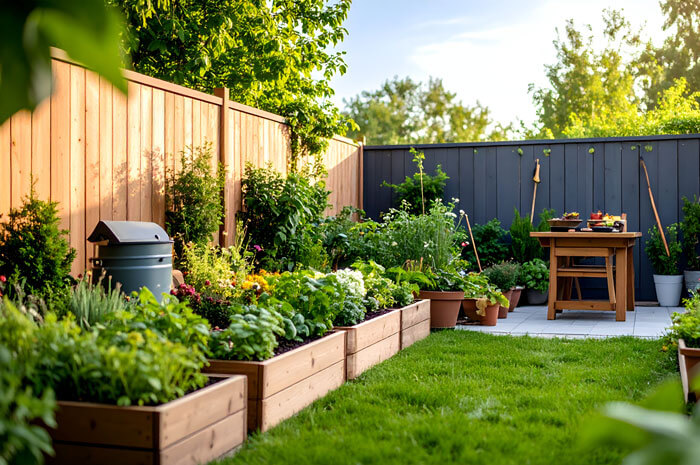
Soil is the foundation for your entire lawn. Your flowers, plants, grasses and more all rely on resting in the right mix. Knowing what type of soil you have — as well as common soil types and their characteristics — will help any amateur gardener or landscaper get the gorgeous yields they’re looking for.
Wondering what the different types of soil are? The most common types of soil found in yards include sandy soil, silty soil, clay soil and loamy soil.
How Can I Tell What Kind of Soil My Yard Has?
Determining what type of soil you have in your yard is useful for understanding how water and nutrients behave in the ground. Being certain about the type of soil you have is a two-part process: first you look at it and then you do some testing. Your initial visual inspection will help you determine the follow-up tests you want to do next. So here’s what to do:
- Visually inspect your soil. Take a look at its appearance and texture. Make sure you’re able to determine the following characteristics:
- Color. Soil can be light, dark or in between. What color is yours? Darker soils typically have more organic materials mixed in.
- Texture. If you gently squeeze a handful of soil in your hand, how does it feel? Sandy soil tends to feel gritty and doesn’t hold its shape well. Silty soil feels smooth and holds its shape better than sandy varieties. Clay soil feels sticky and can be easily molded. Loamy soil is a balanced mixture of sand, silt, and clay — making it both crumbly and well-structured.
- Get your soil tested. When it comes to testing your soil to determine its type, you have a few options: performing one of a few available at-home tests or getting it professionally tested. For the most comprehensive analysis available, you can send a soil sample to a local university or soil testing laboratory for detailed information. Otherwise, you can try one of these tests:
- Soil ribbon tests can help you verify your soil’s texture. All you have to do is take a moist sample of soil from your yard and try to roll it between your fingers in order to create a “ribbon.” The length and texture of the ribbon you’re able to create will help you determine composition.
- Sandy soil doesn’t form a ribbon
- Silty soil forms a short ribbon
- Clay soil will form a long ribbon
- Loamy soil will form a medium-length ribbon, though its blended nature means that it’ll give the most variable outcome
- A jar test will help you estimate the relative proportions of sand, silt and clay in your soil. Fill a clear jar with water and add a handful of soil. Then shake the jar vigorously and then let it sit undisturbed overnight. In the morning, the sediment you shook apart will have settled in layers. Sand at the bottom, then silt, then clay on top.
- A pH test can help you measure the acidity or alkalinity of your soil. pH kits are available for purchase at a variety of retailers. These measurements are especially helpful to gardeners seeking to grow specific varieties of plant or flower.
- Soil ribbon tests can help you verify your soil’s texture. All you have to do is take a moist sample of soil from your yard and try to roll it between your fingers in order to create a “ribbon.” The length and texture of the ribbon you’re able to create will help you determine composition.
What is the Best Soil Type for My Lawn?
The best soil type for your lawn is generally a loamy one. Loam is a well-balanced mixture of sand, silt and clay — this provides good drainage, water-holding capacity and nutrient retention. A loamy soil allows grass to establish strong root systems, thrive, and resist stressors like drought and heavy rainfall.
However, not everyone’s yard is the same! So doing the tests above and paying close attention to how different plants act and respond to your soil will help you make the amendments you need for the best possible appearance and performance. If your soil type is especially sandy, for example, you can add organic matter like compost to improve water retention.
How Can You Tell If Soil is Good or Bad?
Whether your soil type is good will depend on what you want to use it for. Since most homeowners are interested in soil that can help them maintain healthy grass and plant growth, “bad” soil will be anything that feels dry and compacted or has trouble with drainage.
How Do I Know If My Soil Type is Good for Grass Growth?
Grass thrives and grows best in soil with a balanced loamy texture that provides adequate drainage, water retention and nutrient-holding capacity. It requires a slightly acidic to neutral pH range — around 6.0 to 7.0 — for optimal nutrient availability.
Grass requires essential nutrients like nitrogen, phosphorus and potassium as well as sufficient sunlight, regular irrigation, and proper mowing techniques. By conducting the inspection and tests listed above, you’ll be able to know if your soil meets these needs. The choice of grass species should be well-suited to the local climate and soil conditions to ensure vigorous growth and resistance to pests and diseases.
You Know the Soil Type Basics… Now What?
Now you can start planting with the knowledge of what type of soil you have — and how to make sure it’s helping your yard thrive! For more useful tips and tricks to keep your lawn and garden looking its best all season long check out the expert-backed Toro YardCare blog.



